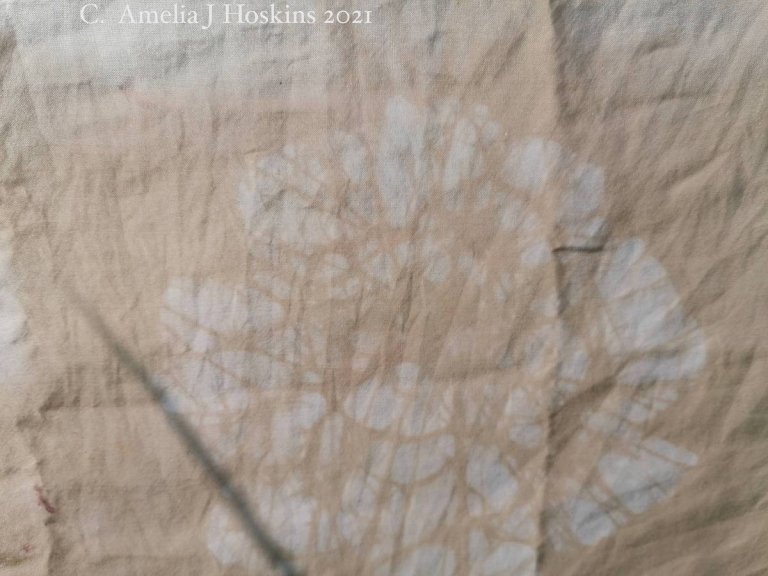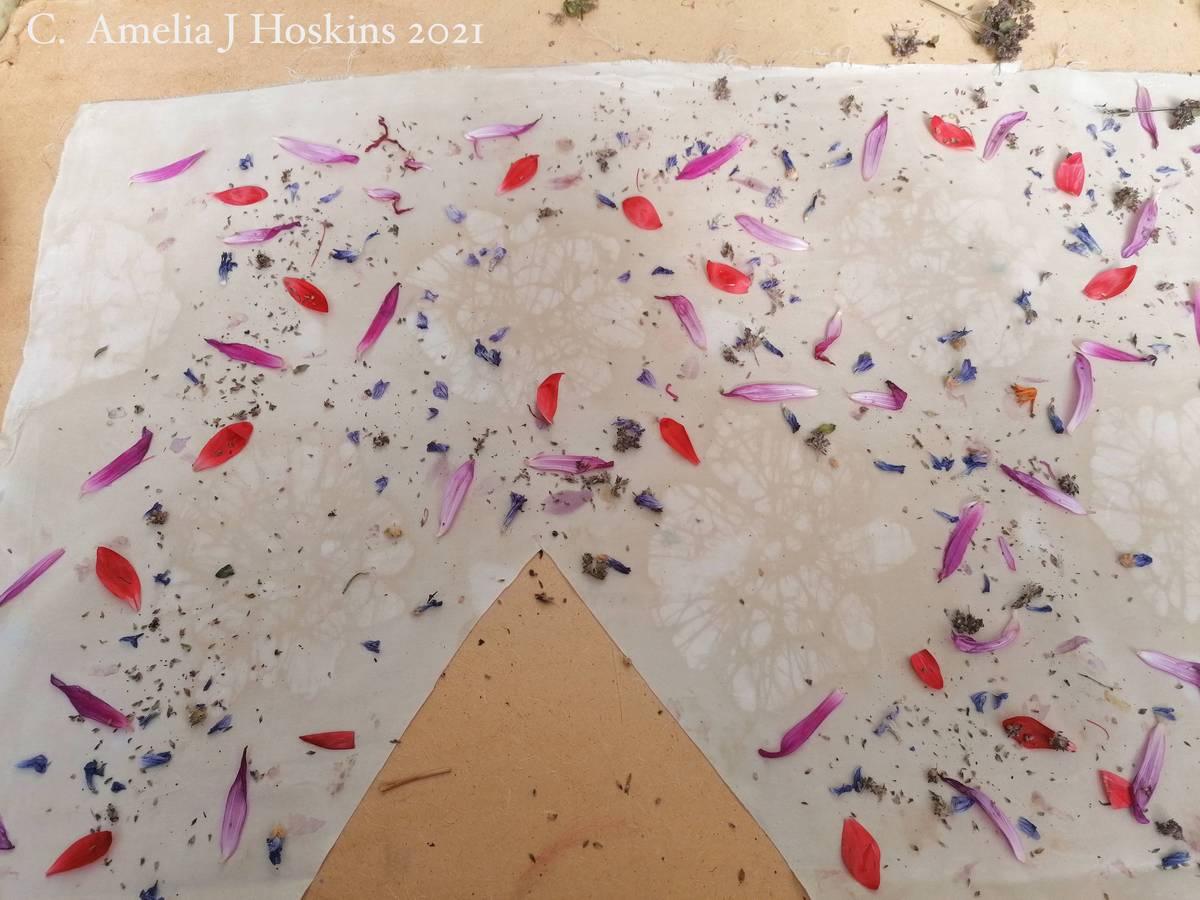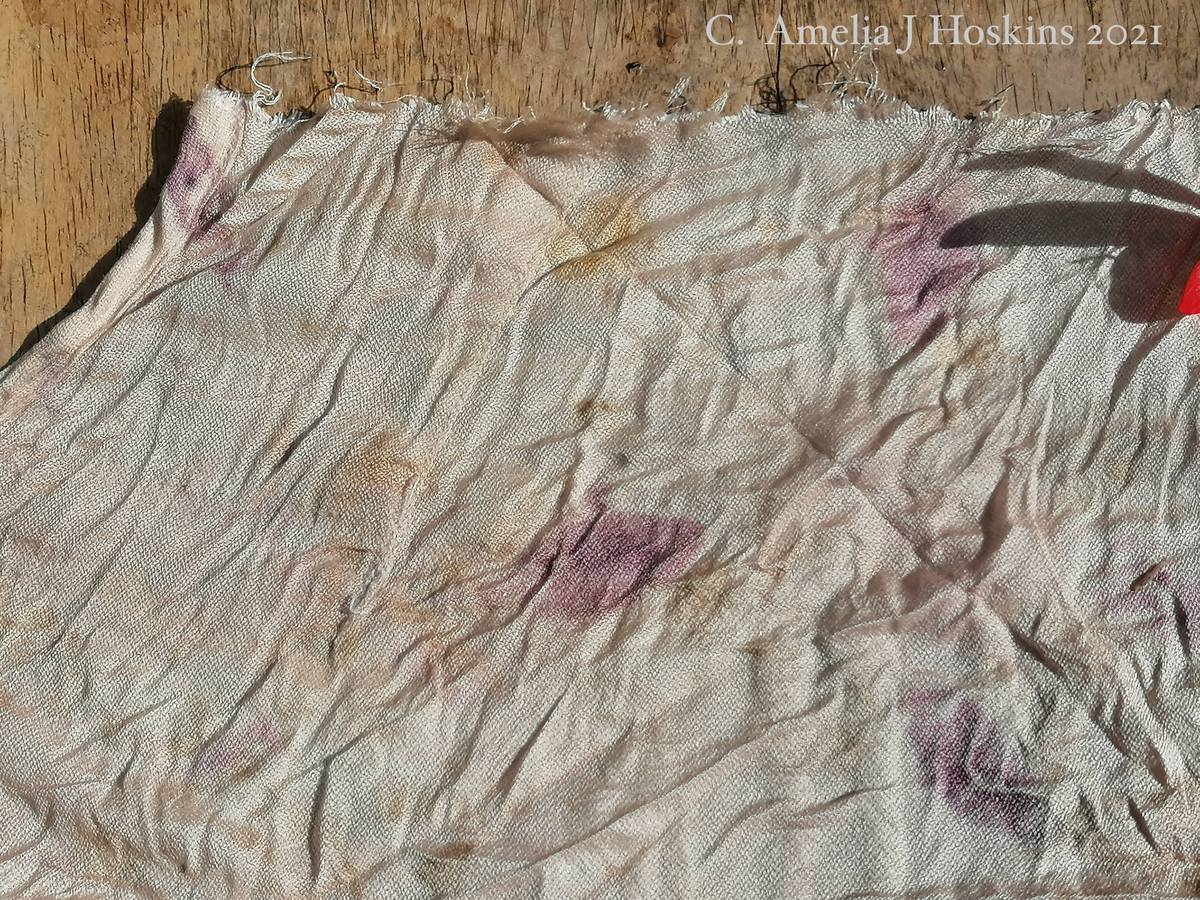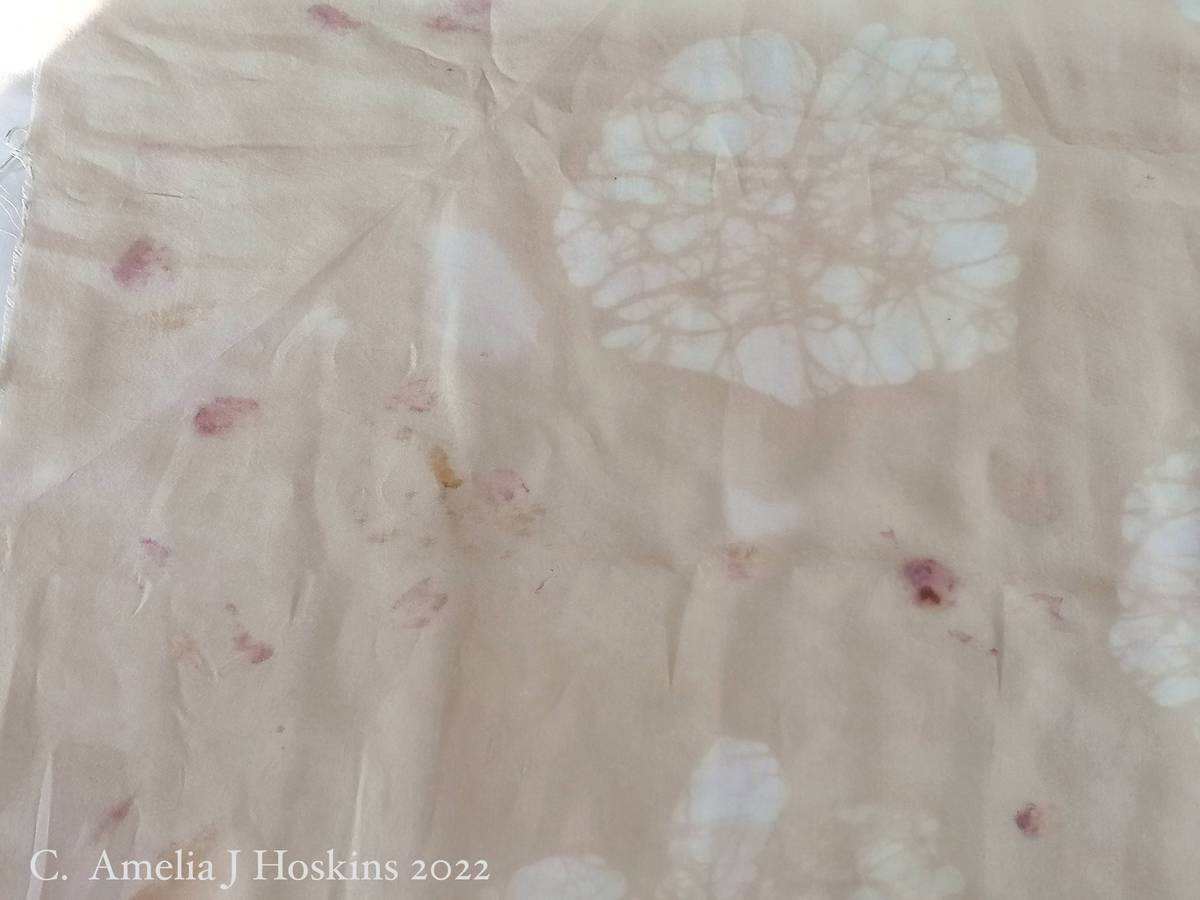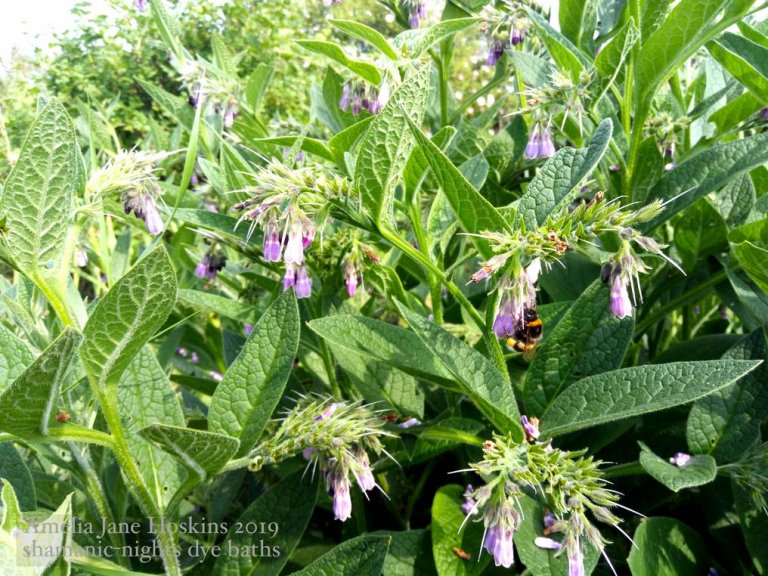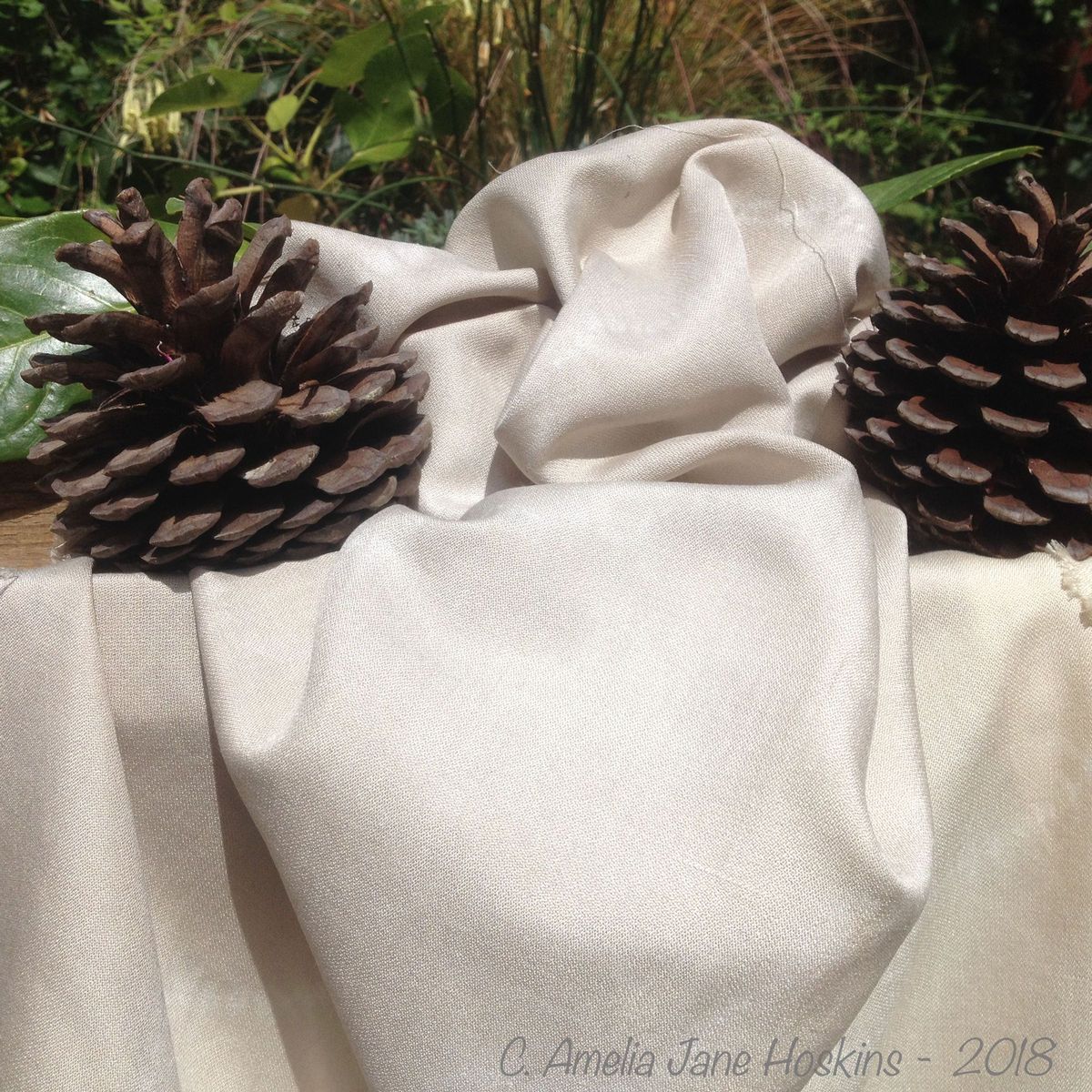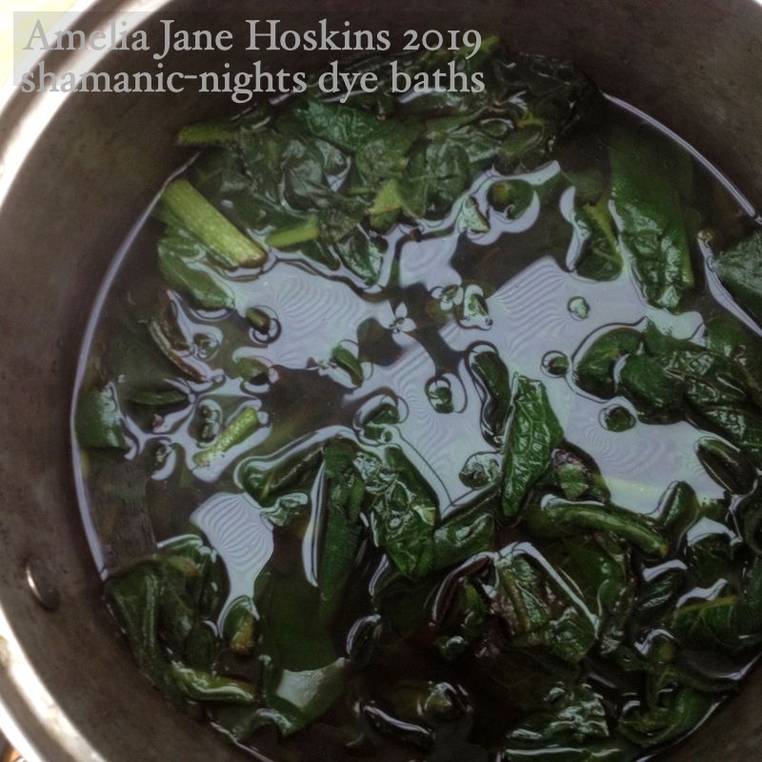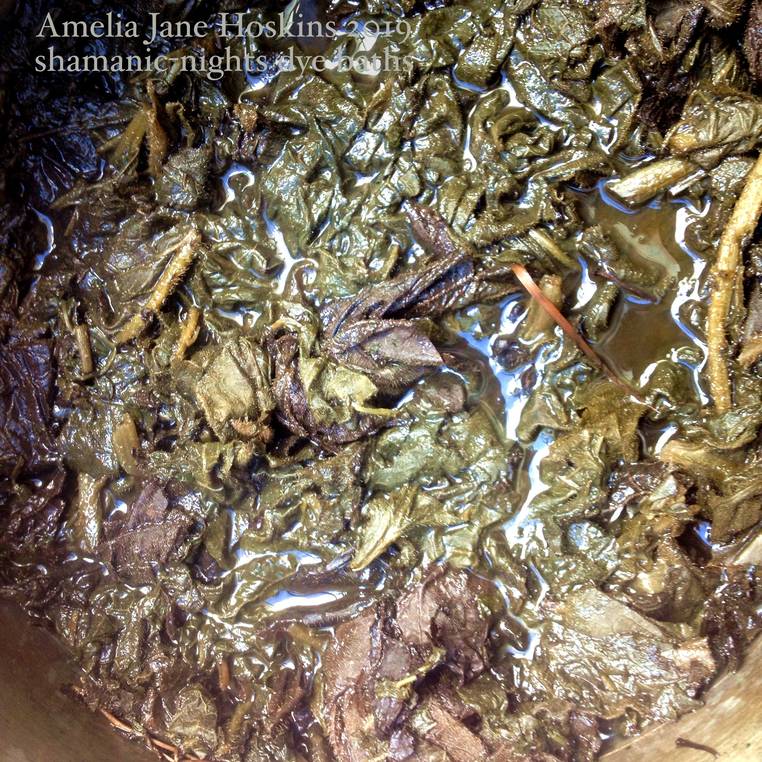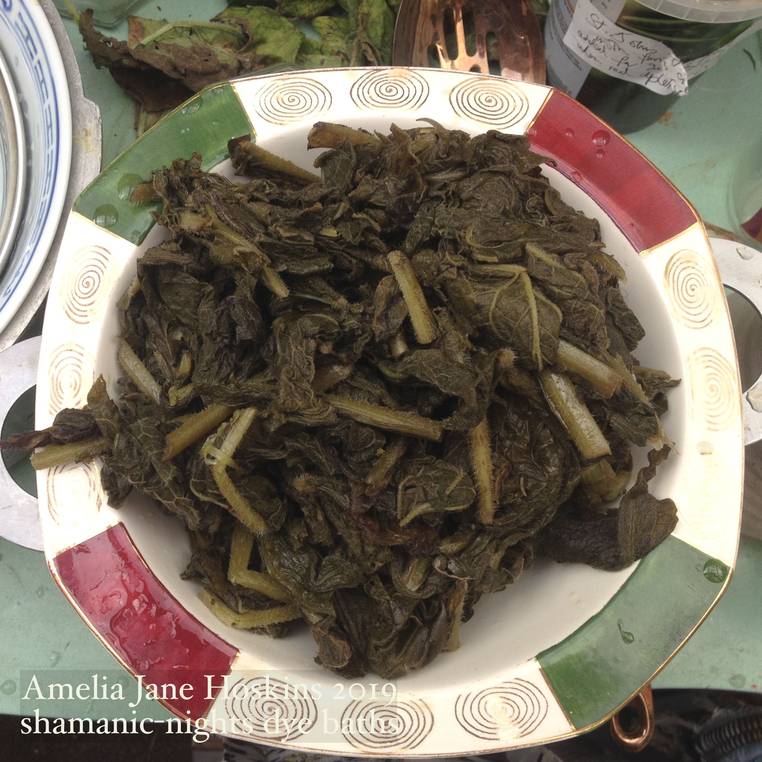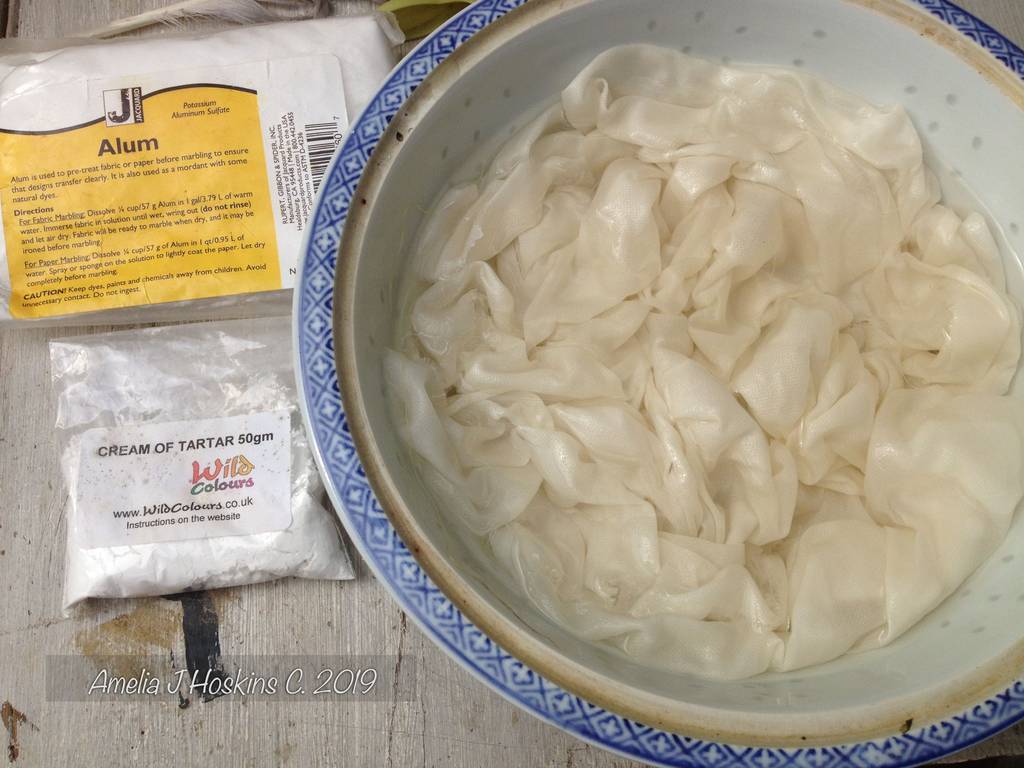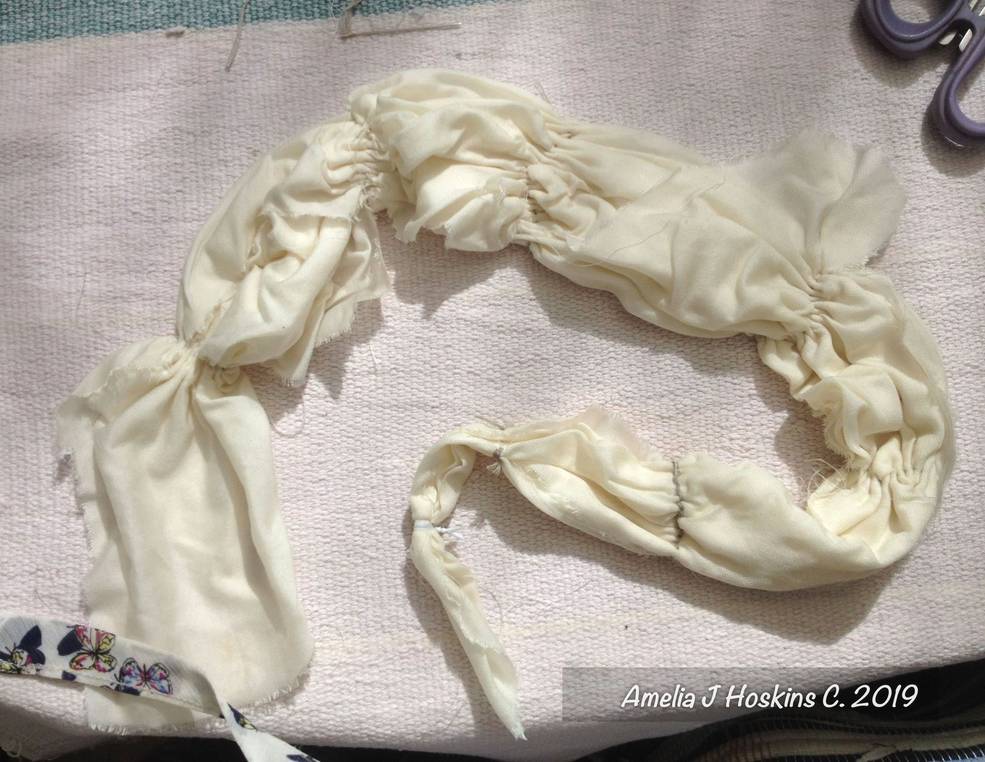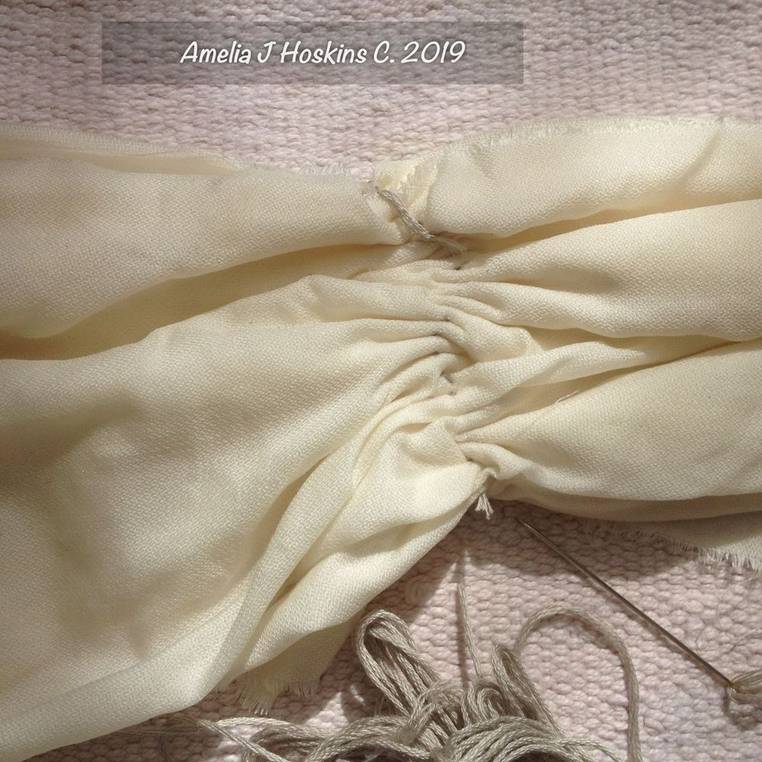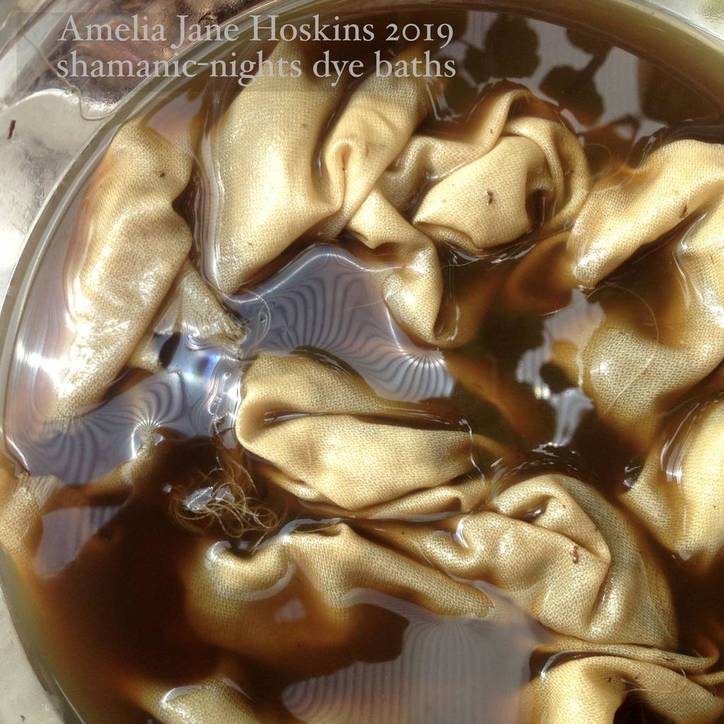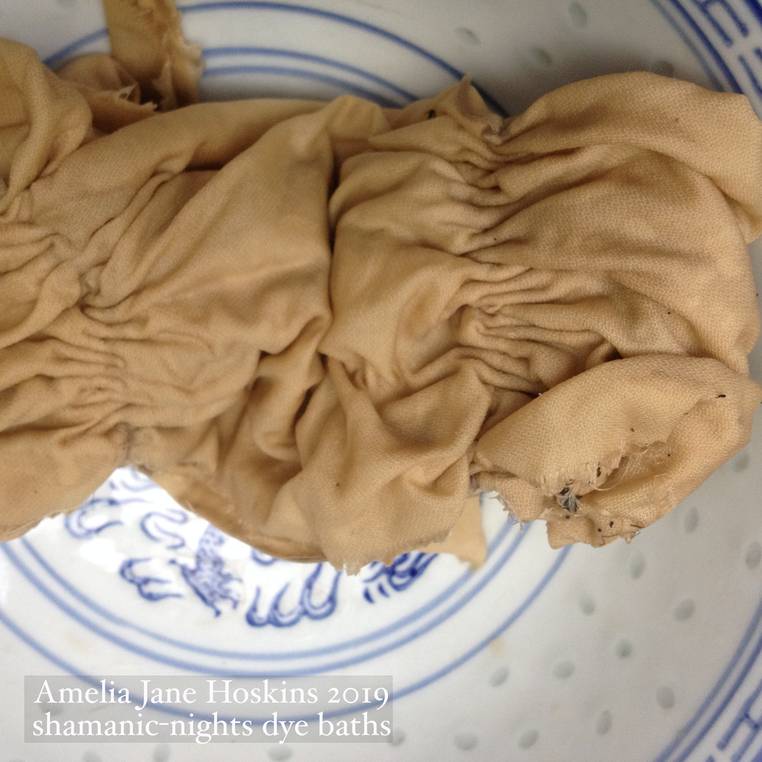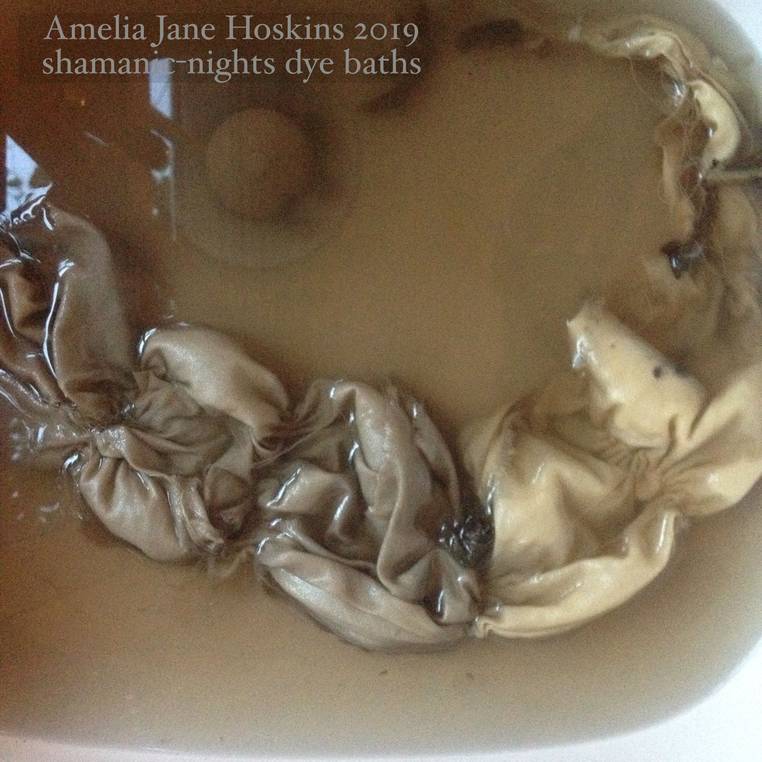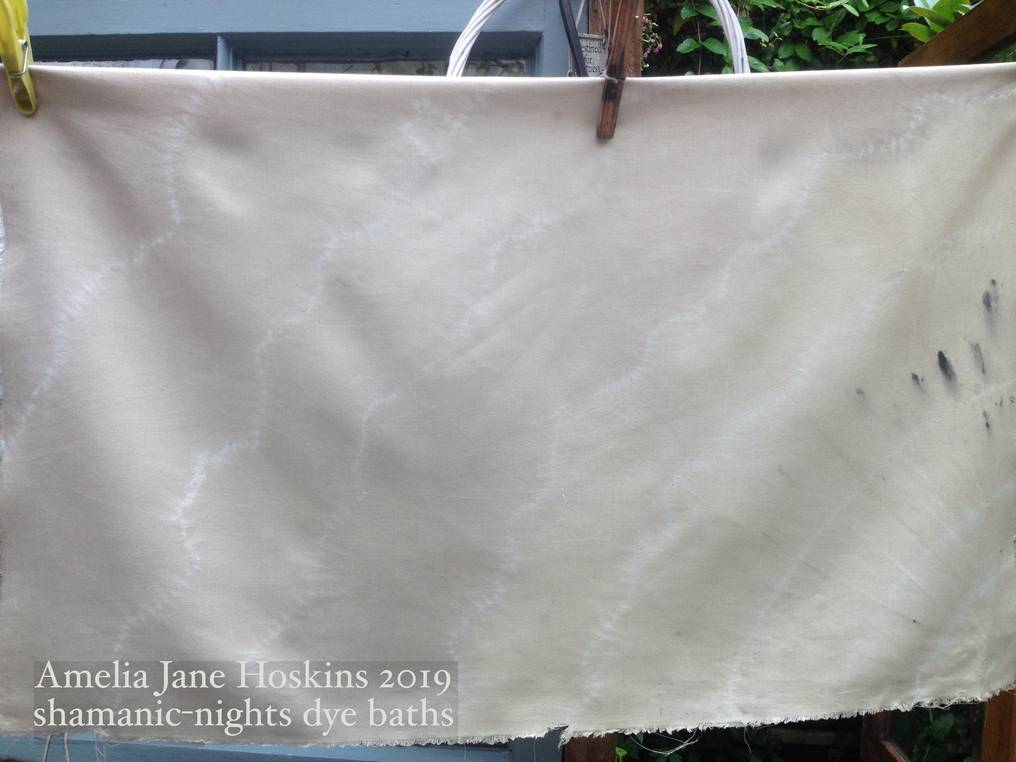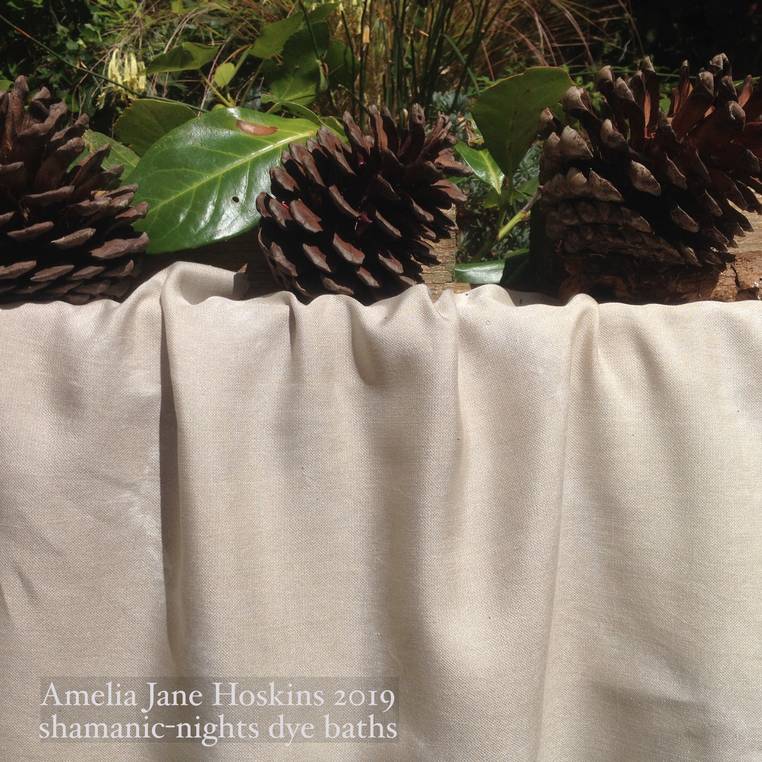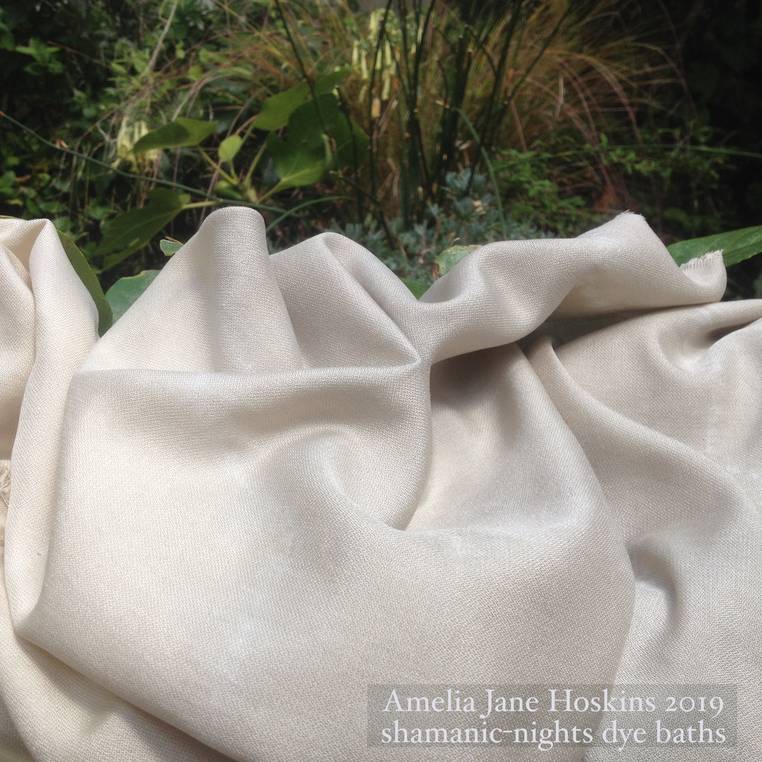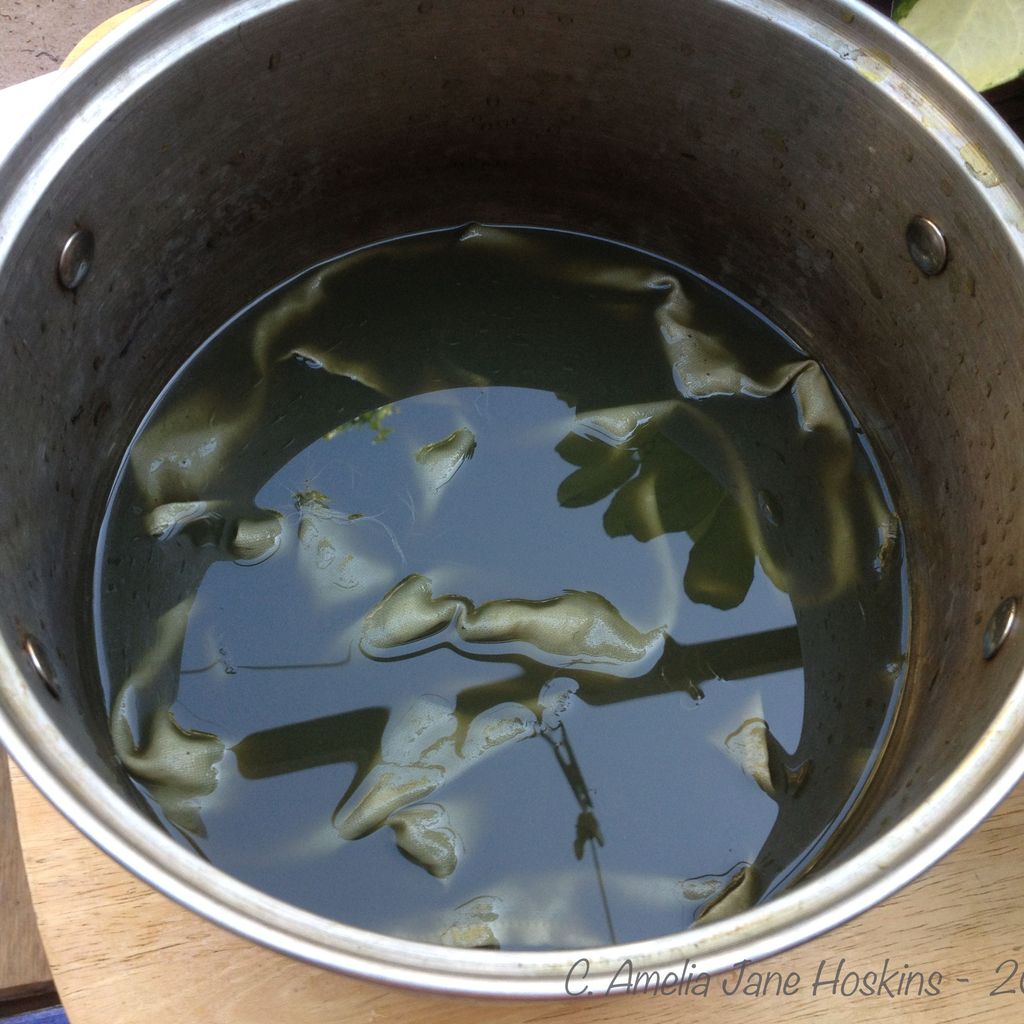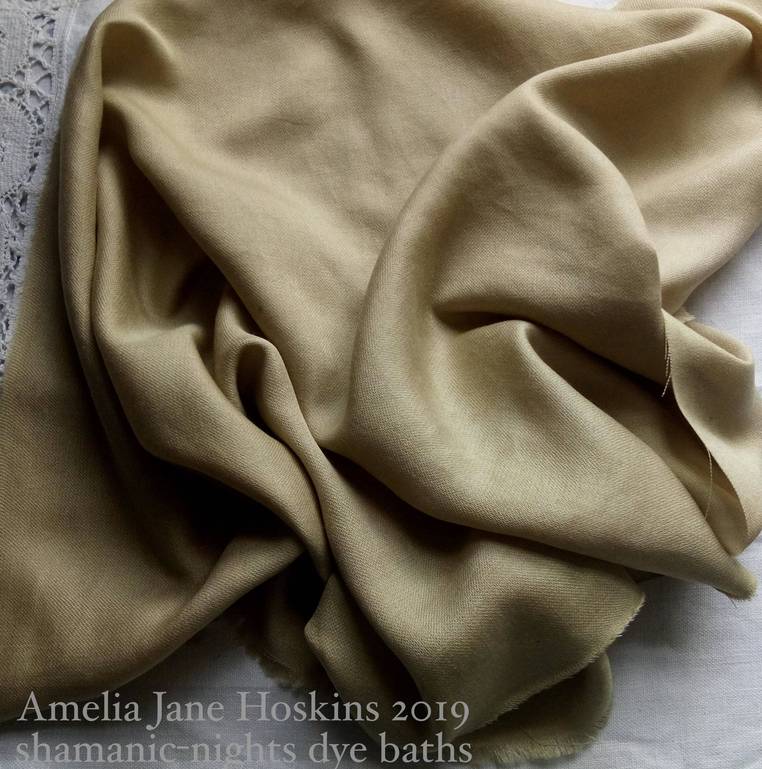Comfrey Soy Waxed Roses
Comfrey Over-died - Wax Resist Roses on Habotai silk
Experimental use of soy wax with stencils of rose shapes, [link to wax stencils] in cold comfrey dye bath. Wax cracks in the cool liquid which can be explored. (see floating wax fragments) I emphasised crackled result by gripping rose shapes with centre point at top of finger hold, to ensure there was a crackled pattern bursting from the centre. This technique has good potential for an overall soy wax design or florals painted on silk before immersing in a dye bath.
Petal Bundle Dye Preparation
Comfrey dyed rose wax stencilled Habotai silk with Khafir Lilly petals, common pink Mallow and dried wild thyme purple seed heads. Several silk pieces can be prepared and added to the same bundle dye. I also added an Ahimsa silk piece from a previous weak woad dye.
Silk pieces are sprayed with household vinegar and carefully folded and wrapped into a bundle, rolled, and tied tightly with string. Not every petal produces strong colour in final outcome, which depends on pressure applied within bundle. A solid tight string casing may be better.
LEFT: Result on Ahimsa silk, purple blurred petal impressions, possibly due to piece being in centre of bundle, and/or previous woad dye on that piece. RIGHT: Result on Habotai silk, scanty light red petal impressions. (impressions were less than imagined, probably due to loose string tied bundle.) A large spread of many petals may be needed for more final impressions.

